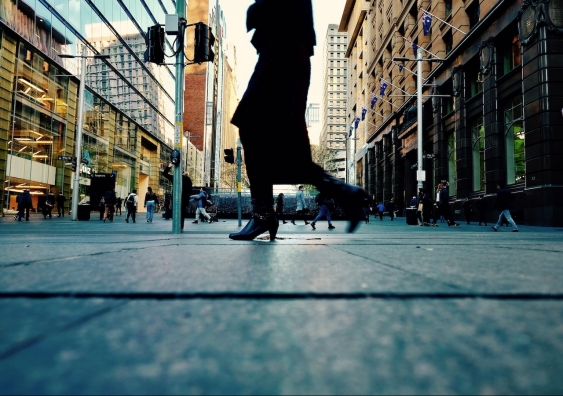The area is secure: countering terrorism through architecture
In the fight against global terrorism, architecture has a surprisingly important role to play.
In the fight against global terrorism, architecture has a surprisingly important role to play.

Ben Knight
UNSW Media & Content
+61 2 9385 8107
b.knight@unsw.edu.au
With the ongoing threat of terrorism, efforts to make public spaces more secure have ramped up significantly. But when it comes to increasing security measures, does it make us feel safer? And ultimately, does it work?
When it comes to sensitive public spaces, UNSW Built Environment lecturer Dr Laurence Kimmel says the answer lies in planning and architecture.
The architect, who researches the boundaries between public and private space, says architecture is more important in counterterrorism debates than you might think.
“A lot of the time, it’s not about the security equipment in the building, but about the building in itself … and the challenge is to keep the openness and symbolic value of the building,” she says.
Dr Kimmel says the public’s sensitivity to the threat of terrorism has increased noticeably since the terrorism attacks of September 11, 2001. At the same time, security measures including bollards, barriers, CCTV and more have simply become a part of the experience of public gatherings.
“We might not be thinking about it as much right now with coronavirus, but global terrorism is still a genuine threat,” she says.
Dr Kimmel says existing counterterrorism guidelines and security measures coexist uneasily with public space.
“Public space has never been a given; it’s always about negotiation,” she says.
“Counterterrorism guidelines need to enable the ways we negotiate the experience of public space.”
'It isn’t the task of the public to be anxious – this kills civic life.'
However, she says, it shouldn’t be the task of citizens to look out for terrorism in public spaces. Passers-by have very low control next to a hostile vehicle used as a weapon, for example.
“Of course you need to be vigilant. But if we’re asking everyone, at all times, to look for potential threats, that creates anxiety,” she says. “I think it would be better for the public to be able to forget about it and enjoy the public gathering they came to enjoy because it isn’t the task of the public to be anxious – this kills civic life.”
Heavy-handed security approaches, and others that encourage dispersing public gatherings away from venues, risk erasing what makes the experience of available public space special.
“There’s something special about public gatherings in terms of the energy shared in the moment,” Dr Kimmel says. “If we erase these moments of sharing public space, I think society loses a lot.”
Dr Kimmel says counterterrorism measures in public spaces should be tailored and kept to an appropriate scale. The blanket approach of the current guidelines fails to adequately account for the differentiated design and security needs of buildings in their specific context.
In addition to further developing counterterrorism guidelines, there is a need to create a framework that makes sense of them in the design context.
“There is what is in the counterterrorism guidelines, but we need to translate it into something more sensitive to the social context, applied and tailored to complex environments, that also considers the needs of the public space.
“It should be done in a proper and balanced way, taking into consideration the context, so a city council doesn’t secure a small public building in a non-sensitive area of Sydney [in] the same way as we would secure a major public building in the CBD,” she says.
She proposes a tailored approach to securing public spaces and buildings, which better considers the context, such as factors like symbolic value and openness of public buildings.
'It’s about putting in the right measures – and sometimes, that is less.'
A layering strategy would encourage more inconspicuous security measures that are less invasive to public space, she says.
“Sometimes, people look at a layered approach as putting in even more security,” she says. “But it’s not about increasing security with three different layers, it’s about putting in the right measures – and sometimes, that is less.
“If people see bollards in the CBD, they could feel more secure, but it is also likely it could make people more anxious. So, it would be much better to design a bollard that doesn’t look like a bollard, such as a very heavy anchored concrete bench,” she says.
“Because people know that authorities have thought about security, but they don’t have to see it on every corner.”
Efforts to secure public buildings, in particular, have traditionally fallen to the security industry. However, Dr Kimmel says if this is done after urban planning and architectural design, it will be costly and result in very visible signs of security.
“You can’t just change the architecture of a building easily to make it more secure after it has been built,” she says.
Considering the security of a building in the design process is crucial to finding the balance with openness. Architects, urban planners and other built environment professionals should work closely with security experts early on in the process.
Where they do, the outcome makes a clear difference, she says.
“Built environment professionals are able to tackle different areas of security; not only the technical side but also the human aspect and psychological aspects,” she says.
“It’s always our responsibility to ensure the safety of what we design and how it impacts the public, as much as it is to worry about the experience of space.”